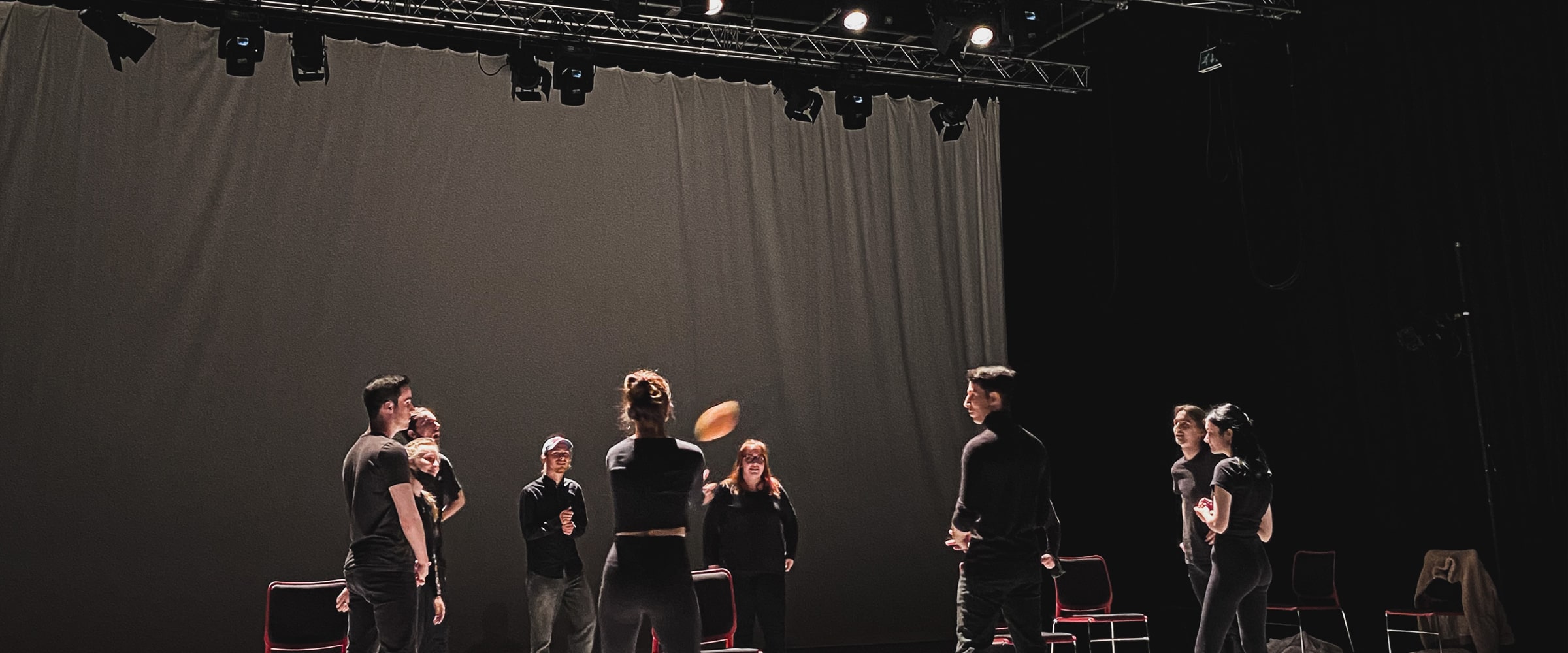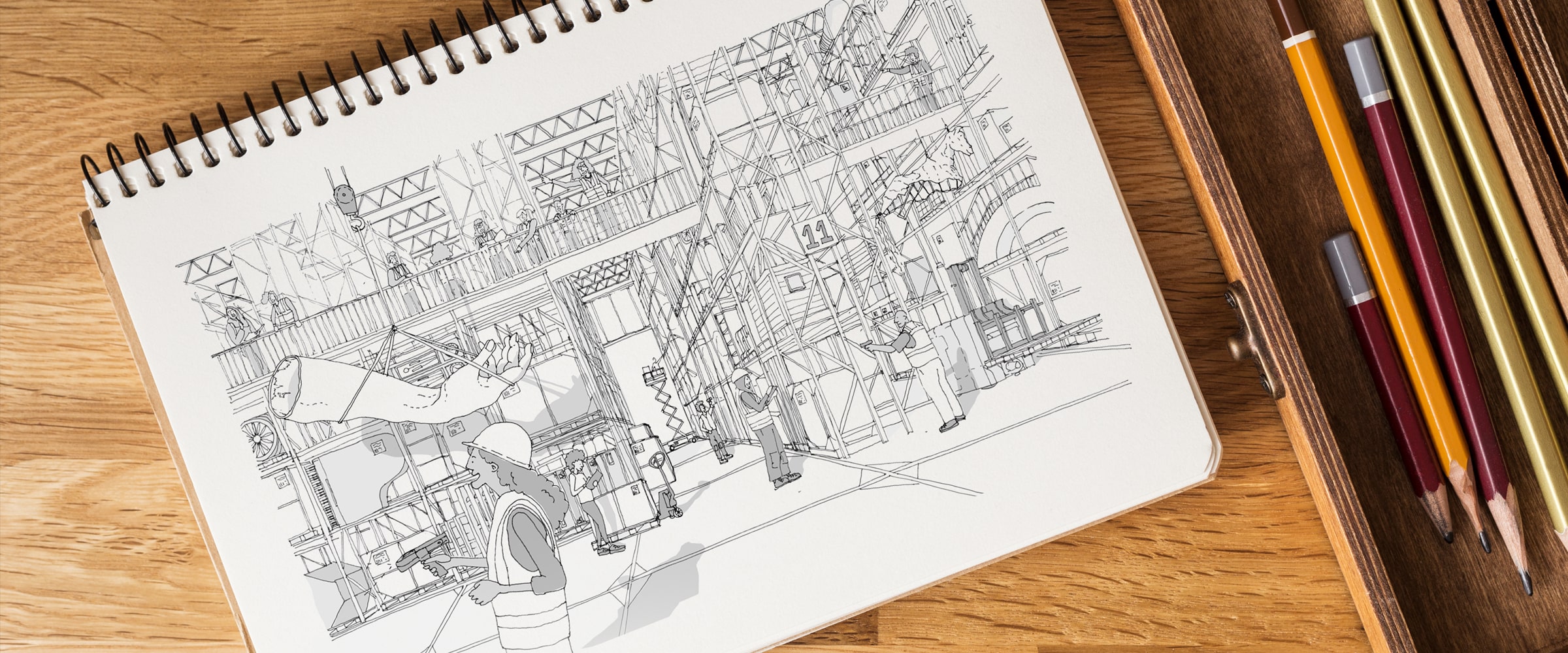
The context
The Mayor of London has set the bold and ambitious goal of becoming a zero carbon city by 2030. This is a challenging target for all businesses, but especially for the creative industries. So, in 2021, the National Theatre was awarded a grant from the Mayor’s Making Space for Culture programme to appoint Avison Young Workplace, Arts and Culture to explore the feasibility of creating a Reuse and Recycling facility for London Theatres.
Circling the subject
The circular economy is seen as a key and interconnected part of the solution to a net zero city. Circularity means finding ways to reduce waste and pollution and keep products and materials in use for as long as possible rather than throwing them away. This includes specifying products specifically designed to be reused or repurposed.
Our initial findings were:
- Without better infrastructure for storage, reuse and recycling, London Theatres will be unable to move to a circular economy and will not achieve zero carbon by 2030.
- The ‘core’ idea of a Reuse and Recycling Facility for theatre sets and scenery seems likely to be viable with start-up financial and operational subsidies and would have a positive environmental impact.
- In time, as more sustainable design practices evolve, increasing the scale of reuse and recycling, the Facility could become self-funding.
- With changing attitudes, working practices and sustained support, it could provide the cornerstone of a bolder vision that sustains London’s theatre industry, supports skills, and moves London theatre decisively towards a circular economy.
Building on this work, in March 2022, the National Theatre was awarded a second grant to commission Avison Young to prepare an HM Treasury-compliant business case.
The business case uses the discipline of the five-case business case model to develop a fundable and executable project, with clearly articulated options and delivery assessment. This enables partners to decide whether the proposition should be taken forward as a fundable project.
The business case identified that:
- There is a very strong strategic foundation for the project. If taken forward, the proposal has the potential to make a notable contribution to the sector’s carbon reduction targets while pioneering more sustainable business practices.
- The preferred option is a physical reuse and recycling centre which pools production material from multiple organizations.
- The recommendation is for a facility to be 9,000 square feet, employing up to four Full Time Equivalent (FTEs) employees, and providing transportation between the site and member theatres.
- For every one square foot of storage space no longer required because of the intervention, member theatres could save up to £49 per annum.
- The new facility should be established as a not-for-profit social enterprise. The social enterprise model will enable the new facility to be operated on a strong financial basis, to bid for public sector funding and to ensure it places the sector’s ambitions for a sustainable circular economy at the forefront of activities and ambitions.
The final report was presented to the National Theatre and the Mayor of London’s Culture & Creative Industries team in January of 2023 – with further work and consultation planned as the project progresses.
The process
- Our team held conversations with multiple stakeholders to understand the scale of ambition, critical requirements, and nature of demand for the proposal.
- They led the development of a framework to shortlist project options against defined stakeholder criteria and arrive at the preferred way forward.
- Conducted an appraisal of the preferred way forward to consider community impact - the society-wide benefits against the society-wide costs of the intervention – identifying the role of carbon savings, financial savings to members and place-based effects of establishing a new facility.
- Our strategic advisory team conducted in-depth financial modelling to map out how much the intervention could cost.

The impact
The economic benefits of the scheme have been estimated over a 20-year period.
The business case identified that public sector support would be required for the initial start-up capital expenditure for the facility and to support 50% of the operating costs in the first 3 years.
This investment would unlock:
- £4.01m carbon emissions savings by enhancing the reuse and recycling of set and scenery materials.
- £33.9m financial savings to London theatres from reduced storage costs because of co-location and release of some existing storage premises.
- £4.6m economic output from new jobs generated to support the operation of new premises.
The project team also agree there is an opportunity for greater community and social impact for this initiative, for example:
- Support for small and medium size theatre companies who typically rely on restricted networks for sharing and borrowing between peers. Widening these networks, and making greater resources available, would be a highly efficient way of supporting the broad and diverse ecology on which U.K. theatre and performance depend.
- Community benefits by opening the theatre world to schools and young people, providing shared workspace facilities, and offering reuse and recycling to artists, schools, and community groups.
- Broadening access to the facility for other sectors like film, TV and events which could drive additional carbon savings.
- Establishing best practices in modular design, and in construction methods to allow for disassembly.
